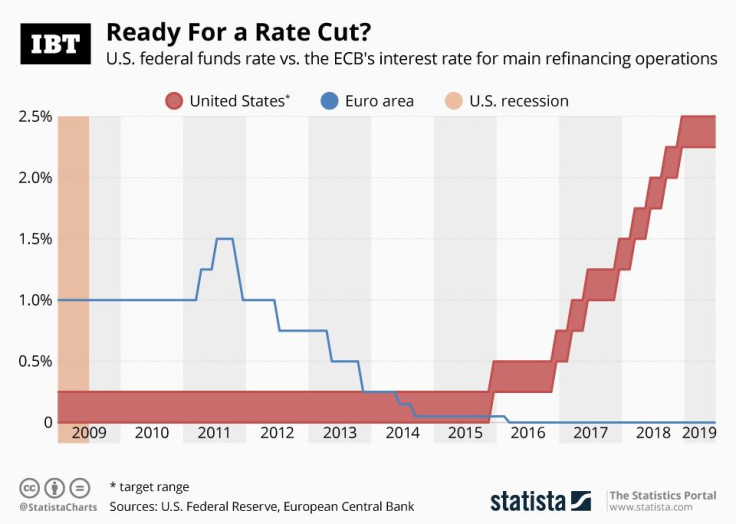Infographic: Interest Rates In The U.S. And Euro Area Since The Great Recession In 2009

The Fed is expected to cut rates for the first time since 2008 as tariffs and fears of a global economic downturn are weighing on economic growth. According to preliminary figures released by the Bureau of Economic Analysis on Friday, U.S. GDP growth slowed to 2.1 percent in the second quarter, down from 3.1 percent in the first three months of 2019.
Ahead of the Fed’s meeting on Tuesday, economists are widely expecting a 0.25 percentage point cut, to bolster the economy preemptively and keep the current expansion alive. The target range for the federal funds rate stands at 2.25 to 2.50 percent since December 2018, when the Fed had announced the latest of nine interest rate hikes after the end of the Great Recession in 2009.
President Trump has repeatedly criticized the Fed for what he considers excessively tight monetary policy, demanding a more significant rate cut than we’re probably going to see this week. “The E.U. and China will further lower interest rates and pump money into their systems, making it much easier for their manufacturers to sell product. In the meantime, and with very low inflation, our Fed does nothing - and probably will do very little by comparison. Too bad!”, he said on Twitter this morning, referring to reports of the ECB preparing a rate cut to prevent the euro area from sliding into a recession.
As the following chart shows, the European Central Bank lowered the interest rate for main refinancing operations to 0.00 in March 2016 and has kept it there ever since. In the meantime, the United States has seen eight rate hikes, of which seven took place after Donald Trump took office in January 2017.





















